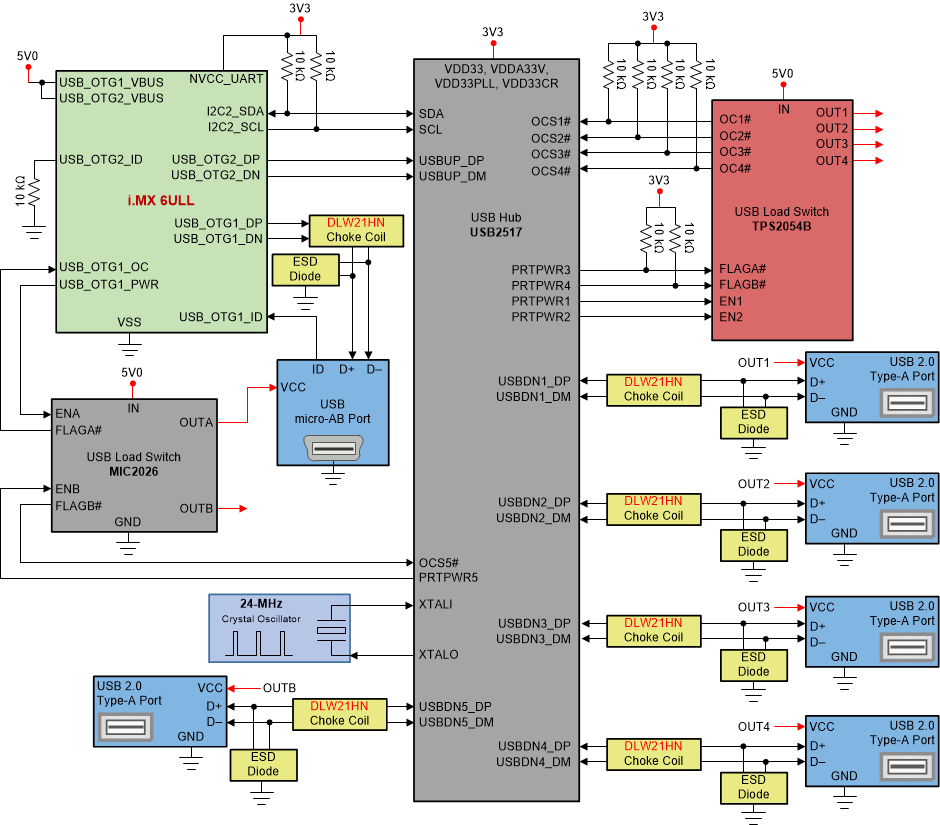TIDUEW7 May 2020
- Description
- Resources
- Features
- Applications
- Design Images
- 1System Description
-
2System Overview
- 2.1 Block Diagram
- 2.2 Design Considerations
- 2.3 Highlighted Products
- 2.4 System Design Theory
- 3Getting Started, Testing Setup, and Test Results
- 4Design Files
- 5Software Files
- 6Related Documentation
2.2.4 USB Ports
This design uses the processor's two USB interfaces, where the primary USB OTG1 interface connects directly to the micro-AB port and USB OTG2 acts as a host only, connecting to a USB Hub. The USB2517I is a 7-port USB hub that multiplexes the USB data from OTG2 and distributes the data to 5 Type-A receptacles. The block diagram shows both USB HUB and OTG interfacing with the processor. The wiring of the USB interfaces is shown in Figure 7.
| DESCRIPTION | MFG. | PART NUMBER |
|---|---|---|
| USB Hub Section | ||
| Conn, USB 2.0, Type-A, Receptacle, 1x1, Shielded, RA, TH | TE Connectivity | 1-1734775-1 |
| Conn, USB Type-A Receptacle, 2x1, Shielded, Stacked, RA, TH | TE Connectivity | ZX62D-AB- 5P8(30) |
| Filter, Choke coil, CM, 90E, 330mA, Signal Line, SMD | Murata | DLW21HN900SQ2L |
| IC, TPS2054B, Quad Current-Limited Power-Distribution Switch, SOIC-16 | Texas Instruments | TPS2054BDR |
| IC, USB2517I, USB HUB, 7-Ports, QFN-64 | Microchip | USB2517I-JZX |
| USB OTG Section | ||
| Conn, USB 2.0 Micro AB Receptacle, 1x1, Shielded, RA, SMD | FCI - Amphenol ICC | 10104111-0001LF |
| Filter, Choke coil, CM, 90E, 330mA, Signal Line, SMD | Murata | DLW21HN900SQ2L |
| IC, MIC2026, Dual Channel Power Distribution Switch, SOIC-8 | Microchip | MIC2026-1YM |
Figure 7. USB Interface
